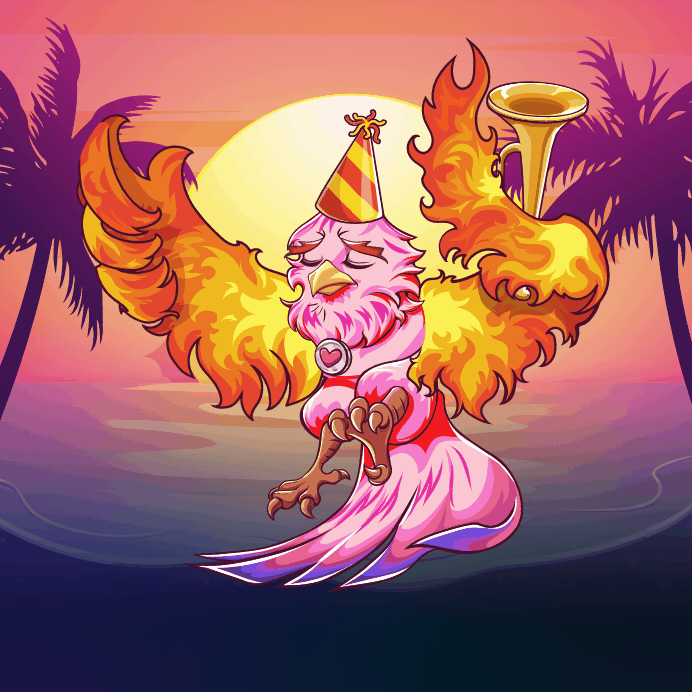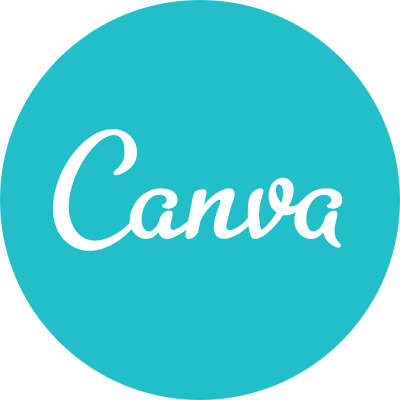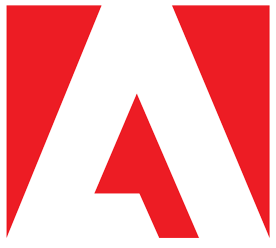How We Accidentally Built The Most Advanced NFT System In The World
Hello! Who are you and what business did you start?
I’m Bruno, and I used to be a web developer in a past life. In 2015 I join the blockchain movement as Ethereum entered the scene and have been building Web3 products and teaching people about Web3 ever since - from having worked on Ethereum 2.0 for a while to being engaged with Web3 Foundation presently, and developing an NFT standard on top of Polkadot and Kusama.
Last year I formed RMRK, a standard to build NFTs on Polkadot and Kusama and my team developed singular.rmrk.app as the minting and trading UI for the ecosystem. Throughout our development journey, we accidentally built the most advanced NFT system in the world. Right now, the volumes are around $1 million per month, which is a lot given that the Singular UI project itself is only a month old :) Our revenue is $30k per month right now, projected to be around $500k annually by the end of 2021.

What's your backstory and how did you come up with the idea?
The NFT craze happened once before, in 2017. I was part of it all, a very active part. So in 2020, sometime around August, I noticed another NFT craze slowly ramping up. Having worked on Kusama and Polkadot chains for a while by then, I had become a fan of Kusama which had by that time evolved into a cypherpunky, artsy blockchain of its own, so I felt like it would be a shame if Kusama missed out on this NFT craze.
The problem was that being a relay chain - a chain meant to connect other chains - Kusama had no smart contracts to stay lightweight. So I came up with a hack to put NFTs onto a chain without smart contracts, and called it RMRK because it was based on a function of the chain called “system remark”.
System remarks are basically graffiti that you put onto the blockchain, and so I wrote a set of rules and specifications for how to interpret those custom messages to have meaning. These rules are called RMRK.
I knew it was going to be successful because of a) how popular NFTs were getting and b) people REALLY wanting to express themselves on cheaper, more eco-friendly blockchains like Kusama.
It’s really hard to develop commercial things that are built on infra like the blockchain that is online 24/7 and has no downtime. That means you also have no downtime. There’s always a fire to put out, much more so than in traditional IT.
I was lucky enough to be able to take this plunge because of my job at Web3 Foundation. I was intimately familiar with the inner workings of the chain to be able to pull this off, and by now I had been comfortable enough, financially, to self-finance the whole thing. All in all, before we launched the Singular UI, I put in about $350,000 of my own money to get things rolling.
Take us through the process of designing, prototyping, and manufacturing your first product.
As I was coming up with the standards for building NFTs, I wanted to be as compatible as possible with what’s already out there - the NFTs on Ethereum, for example, standards like ERC721 and ERC1155 (those don’t have to mean anything to you, but you can think of them like “power socket shapes” - if you aren’t compatible, you need adapters - that’s why your electronics can’t plug into sockets on the other side of the ocean). Compatibility would enable an immediate merger of the two ecosystems, rather than diverging clumsily.
At the same time, I also wanted to push the ecosystem forward, make something great. So I came up with a system of upgradeable NFTs that basically now amount to “art legos” - you can compose highly complex art or NFTs that execute custom functionality and do wonderful things based on some triggers. But to build the logic, I had to find a team. To finance a team, I had to fundraise. To fundraise, I had to get regulators on my side so I could pull off what we call an “initial collectible offering”. $350k later, it all worked out.




Describe the process of launching the business.
To launch our first product, Kanaria, the NFT launchpad, and the initial collectible offering platform, we had to get really creative. First, we had to build really safe tools which allow the trading of NFTs without smart contracts. Then, we had to market it well and approach potential investors with good stories.
The entire period was financed out of my pocket, but as soon as early investors started showing an interest we put that money right back into the product to improve it, appease regulators, and enhance our marketing. Compound returns soon started to show.
The idea was this:
- Sell special NFT eggs
- Let people send emoticons to those eggs
- The eggs hatch in June 2021, and people get unique birds from them. The look of the bird is influenced by the emotions the egg got.
- Gamify emoting by forcing people to have 3 hatchling (🐣) emotes on the eggs before a certain date, so they have to invite friends to emote for them. Further, build a leaderboard of the most emoted eggs and reward those with the most emotes with extra art.
- The birds give owners permanent, long-term platform-specific bonuses, and bonuses on partner platforms. Make it clear that by having more sold eggs, everyone gets better birds:

- Partner with as many high-impact projects in the ecosystem as possible to give utility to these birds even before they are born.
I’m happy to say this worked out pretty well!

Along the way, we learned several important lessons:
KYC sucks. When doing a fundraise, especially in the blockchain space, you want to avoid the World Police™ as much as possible, and this means rejecting USA-based investors unless they are accredited. This, however, makes life difficult for everyone, wherever they come from. KYC has slowed our sales down significantly, but it has poised us for long-term success by not having to worry about the SEC later on, and by keeping our team and our “eggdopters” safe.
If you want funds to invest in your venture in the blockchain ecosystem, you have to promise them tokens. Funds like liquidity and NFTs are, by definition, not liquid. So NFTs are great for fundraising from individuals but very bad for funds and venture capitalists. So a dual offering of NFTs and tokens actually works out well for both sides.
There are a lot of predatory funds out there who only want to flip your tokens. It’s your duty as a founder to isolate those and reject them, as they have no benefit to bring to the venture. Short-term profit is not worth it at the expense of your project’s long-term success and the community’s goodwill.
It’s really hard to develop commercial things that are built on infra like the blockchain that is online 24/7 and has no downtime. That means you also have no downtime. There’s always a fire to put out, much more so than in traditional IT.
Since launch, what has worked to attract and retain customers?
We have tried many growth approaches, some more successful than others.
AMA campaigns are rampant in the space, and once you do one, a ton of them come out of the woodwork asking you to pay for AMAs in popular Telegram groups. These cost very little, something like $500 per AMA for a group of 20k - 100k users, but in reality, that’s also how much they’re worth. The AMAs are filled with bots and giveaway hunters almost entirely, and 95% fake. They are not worth anything. There are notable exceptions, but by and large, AMAs should be avoided - the conversion rate through them has been something like 0.00001%.
Memes do well in the blockchain space, and they do get users to react. Jumping on popular trends helps too - for example, it is currently trendy to think NFTs are some kind of ecological problem. They are not, but by pretending they are, you can go a long way if you're on a chain where they definitely aren’t. Our blockchain is proof of stake, and so it’s very eco-friendly as minting 10000 NFTs on Singular takes about as much energy as Mother Earth needs to digest a breadcrumb. This has helped us get a foothold in some of the more passionate communities.
Newsletter and campaigns do okay if they have a targeted audience, but for generalist newspapers and articles, the benefit is extremely limited.
Gamified campaigns and contests help a whole lot, at least on the social side. We ran a Gleam campaign which gave us thousands of new followers and interested parties. We didn’t get any sales, but we increased our reach dramatically which later brought in sales.

We also ran some contests to produce memes and custom art, as well as telegram stickers. These worked out well, and we gave out NFTs as rewards.

This also increased our community’s size, which made some investors hear about us, which landed us some seed investments, etc. It’s all compound effects. But it’s a very difficult job without a dedicated marketing officer, so this was incredibly hard to juggle. I’d recommend getting a very good marketing person well ahead of time if you’re planning to launch something!
One of our least successful campaigns was with Twitter ads - zero conversions for millions of impressions. One of our most successful campaigns was Brave popups: $20,000 for a 20-day campaign yielded around 25,000 hits per day at a conversion rate of 16% in terms of clicks on the ads, and a pretty impressive sales volume, netting us around $500,000.

How are you doing today and what does the future look like?
We are currently profitable at close to $300,000 per year. This is possible because we’re staking our capital, and not burning it, to provide a living runway - we are earning around 10-15% returns on our seed round, which compounds. We only spend these profits, which makes sure we basically “never” run out of money.
We don’t have specific numbers on ad ROI and SEO ROI, we’re hiring people who will be able to do better breakdowns, but right now, it’s been hit or miss - in blockchain, a lot of it depends on having that one proper connection or getting the attention of that one particular whale. It’s a very roulette-like environment that you have to be comfortable in to succeed.
Our short-term goal is to hire more people on the non-tech side, so marketing, meme officers, finance, and of course design since UX is a big focus of ours.
Long term, we want to bring value to the $RMRK token we launched and are collecting seed investments for now, and we’re doing this by expanding our partnership network and spreading our “tentacles” far and wide. We have the best NFT system in the world, and it’d be a shame to not spread it to all the different platforms. Our partnerships right now include the heavy hitters from the Kusama ecosystem:
- Acala, the DeFi hub
- Phala, the secure computation platform
- Unique, the NFT-oriented blockchain
- Moonbeam, an Ethereum clone which we’ll deploy smart contracts on
- Zeitgeist, a prediction market and futarchy chain which will let people bet on NFT markets and reward people with NFTs
- Unifty, a cross-chain NFT minting, and trading platform
- Etc.
All this will demand the RMRK token, and with a max supply of 10 million tokens, the token is likely to be in high demand.
We also want to further enrich the Kanaria birds which are at the same time extremely limited NFTs, and a tech demo of the RMRK 2.0 standard we've built to actually be the most advanced NFT system in the world.

Through starting the business, have you learned anything particularly helpful or advantageous?
Apart from the lessons learned as stated above, I would say - define the terms of your team’s collaboration early to reduce friction later. Get full-time and dedicated people on your team as soon as possible, who are passionate about the project and don’t just see a good paycheck as motivation, and start marketing well ahead of time.
Don’t have the skills to get to a full plan? Launch an idea and get those people you need hooked on that idea.
Often you react to market conditions impulsively and have to launch fast, so this isn’t possible, but when it is, you should absolutely build hype well in advance.
What platform/tools do you use for your business?
The main tools we use right now are Telegram for all the chats, Discord for some more chats, and Github for all the code. We do pay attention to traffic through the privacy-oriented Fathom analytics, and we use the Kraken exchange for our liquidation needs.
To keep Telegram clean we use Chainfuel, and for Discord that’s Mee6. These are just the preferred tools in the crypto community.
To make some educational videos, we used the services of Lemons and will continue to use them, they’re very good (see below).
For infrastructure, we use Vercel for our frontends, DigitalOcean for helper back-end infrastructure, and Pinata for pinning IPFS content, so the NFTs people mint on our platforms can become instantly globally available. We picked these for ease of deployment, but since our stack is blockchain-based, anyone can really run a copy of our stuff on any platform.
We also use Crowdin to keep our UIs translated by the community.
What have been the most influential books, podcasts, or other resources?
I would say there is only one book you absolutely must read - that’s Camilla Russo’s Infinite Machine. It explains how it all started, why it did, what the ultimate goal is, and sets the stage for everything that’s happening now.
As additional knowledge, you can also try Mastering Bitcoin, as it’ll go even further back in time and explain why Bitcoin happened, even though it is largely irrelevant today. Finally, if you have the time (several dozen hours at this point), go listen to the Bankless podcast.
Advice for other entrepreneurs who want to get started or are just starting?
He who ships wins. Don’t think, ship.
Don’t have a full spec? Launch an MVP.
Don’t have devs? Launch a plan.
Don’t have the skills to get to a full plan? Launch an idea and get those people you need hooked on that idea.
There’s an interesting story about how the IMG tag made it into the HTML standard, rather than the originally suggested picture tag. The moral of the story is: he who ships, wins.
Are you looking to hire for certain positions right now?
We are willing to pay in crypto, or fiat, whatever the candidate prefers. We need:
- A content and marketing person to write our blogs, newsletters, press releases
- A developer experience / technical writer person to write tutorials and technical explainers and develop prototypes
- A community manager to handle our Telegram, Discord, Twitter and optimize our SEO presence.
- A full-time designer to design new NFTs, new UIs, new products.
- An accountant (finance person) to optimize our cash flow, monitor expenses, and make sure it’s all above board, and distribute revenue to our NFT holders (they are entitled to a revenue share of the team)
- A business development and growth person to establish new partnerships, weed out the bad ones, and more.
Where can we go to learn more?
- Website
- Singular UI minting and trading platform
- Fundraiser and seed raise
- Whitepaper
- Deck
- Youtube
- Telegram
If you have any questions or comments, drop a comment below!

Download the report and join our email newsletter packed with business ideas and money-making opportunities, backed by real-life case studies.

Download the report and join our email newsletter packed with business ideas and money-making opportunities, backed by real-life case studies.

Download the report and join our email newsletter packed with business ideas and money-making opportunities, backed by real-life case studies.

Download the report and join our email newsletter packed with business ideas and money-making opportunities, backed by real-life case studies.

Download the report and join our email newsletter packed with business ideas and money-making opportunities, backed by real-life case studies.

Download the report and join our email newsletter packed with business ideas and money-making opportunities, backed by real-life case studies.

Download the report and join our email newsletter packed with business ideas and money-making opportunities, backed by real-life case studies.

Download the report and join our email newsletter packed with business ideas and money-making opportunities, backed by real-life case studies.




















